The "winter" and "summer" modes are informal names for sash clamping adjustments. In the warmer months, the clamping force is not so critical and the weak fit of the seal is even useful, since it provides micro-ventilation. With the onset of cold weather, such an effect turns into drafts from the windows, which will not please anyone.
This problem is solved by changing the clamping on the eccentrics of the sash. In winter, it increases, and in spring it returns to its original position in order not to additionally load the seals and extend their service life.
As is the case with other adjustments of windows and doors, you can manage it in just a few minutes.
Depending on the design of the hardware used, you will need one of the following tools to set up:
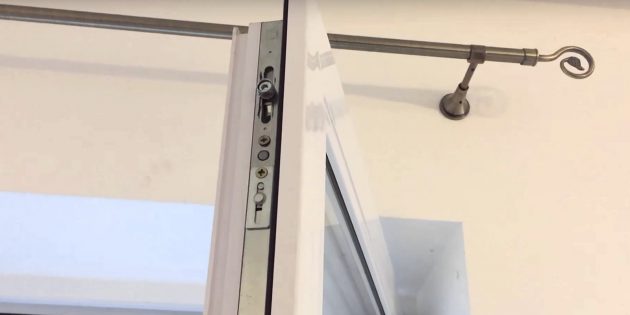
Open the window and inspect the end of the sash. There should be round parts sticking out — they are called eccentrics, or trunnions. On different fittings , their appearance differs slightly: they can be round with or without a key socket in the center, or oval without any holes.
The eccentrics are not only on the side of the window, but also on the top and bottom. Depending on the size of the sash, a different number of trunnions are installed for uniform clamping along the entire contour. To set them up correctly, you need to adjust them all.
Please note that sometimes the lower eccentric is located not on the sash, but on the frame.
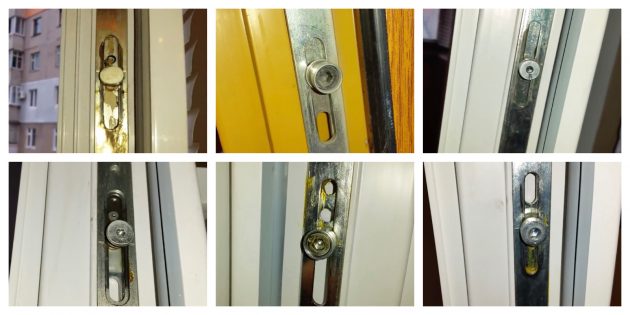
Take a close look at the eccentrics to see which key fits them. Usually it is a 4 mm hexagon, less often it is a Torx T15 ("asterisk"). If the trunnion is oval, then there will be no holes on it — in this case, the part is turned with an 11 mm wrench or pliers.
Round eccentrics without holes are adjusted manually — you need to pull them towards you, set them in the desired position, and then fix them by pressing your finger.
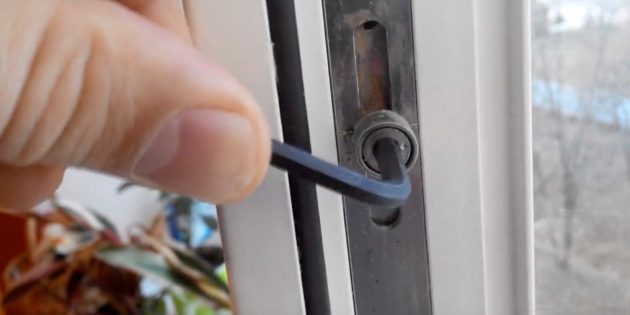
Using the appropriate key or manually move all the eccentrics to the maximum clamping position. They move quite tight, so twist boldly, nothing will break.
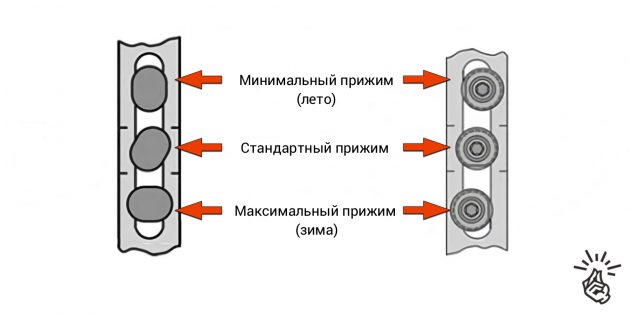
As a rule, there is a dot or risk marking on the end of the part. In a neutral position, it is located in the middle at the top or at the bottom. The position of the label towards the seal corresponds to the maximum pressure, towards the street — to the minimum.
It's easy to remember: risk in the room is winter, risk outside is summer.
Oval eccentrics have a standard diagonal position. That is, the maximum pressure will be if the part is rotated horizontally, and the minimum — vertically.
Sometimes there are no marks on the trunnions at all. In this case, you need to navigate by the eccentrics themselves. If you expand them with a wider part to the seal, then the pressure will increase, and if the narrow side decreases.
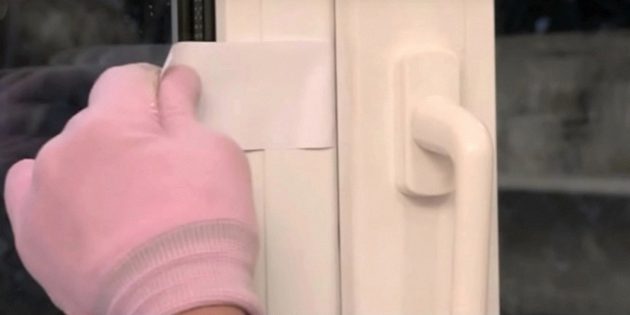
After adjustments, be sure to check the tightness of the structural elements. To do this, take a piece of paper, insert it between the frame and the sash, and then close the window and try to pull it out. If the settings are made correctly, the paper will come out with great difficulty or tear.
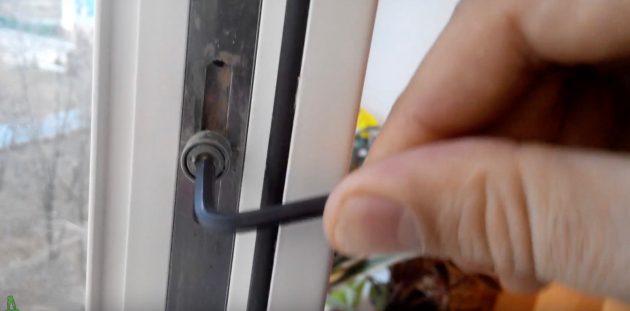
With the onset of heat, be sure to return the accessories to normal mode. If this is not done, then the elastic band will lose its elasticity after some time from strong pressure, and then no adjustments will remove drafts. You will have to completely change the seals.
See the video for details of the whole process: